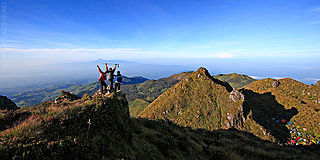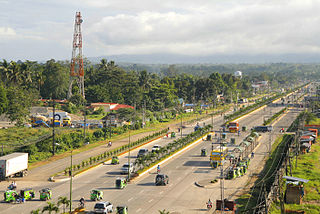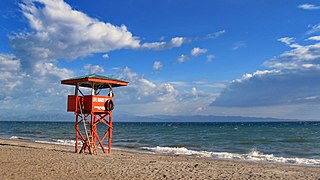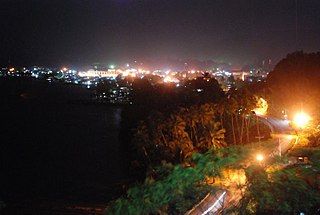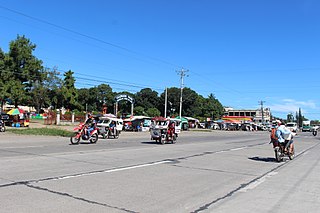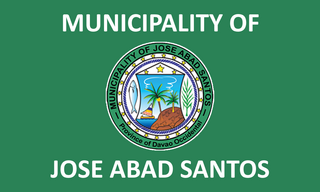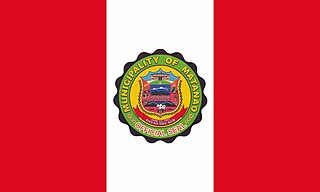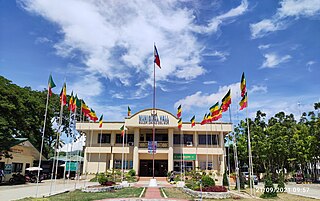Digos | |
|---|---|
| City of Digos | |
 City Hall | |
| Motto: HUGPONG DIGOSEÑOS! | |
 Map of Davao del Sur with Digos highlighted | |
Location within the Philippines | |
| Coordinates: 6°45′N125°21′E / 6.75°N 125.35°E | |
| Country | Philippines |
| Region | Davao Region |
| Province | Davao del Sur |
| District | Lone district |
| Founded | July 19, 1949 |
| Cityhood | September 8, 2000 |
| Barangays | 26 (see Barangays) |
| Government | |
| • Type | Sangguniang Panlungsod |
| • Mayor | Josef F. Cagas |
| • Vice Mayor | Johari G. Baña |
| • Representative | John Tracy F. Cagas |
| • City Council | Members |
| • Electorate | 120,677 voters (2022) |
| Area | |
| • Total | 287.10 km2 (110.85 sq mi) |
| Elevation | 190 m (620 ft) |
| Highest elevation | 1,979 m (6,493 ft) |
| Lowest elevation | 0 m (0 ft) |
| Population (2020 census) [3] | |
| • Total | 188,376 |
| • Density | 660/km2 (1,700/sq mi) |
| • Households | 47,948 |
| Demonym | Digoseño |
| Economy | |
| • Income class | 2nd city income class |
| • Poverty incidence | 8.91 |
| • Revenue | ₱ 1,081 million (2020) |
| • Assets | ₱ 2,481 million (2020) |
| • Expenditure | ₱ 1,004 million (2020) |
| • Liabilities | ₱ 1,284 million (2020) |
| Service provider | |
| • Electricity | Davao del Sur Electric Cooperative (DASURECO) |
| Time zone | UTC+8 (PST) |
| ZIP code | 8002 |
| PSGC | |
| IDD : area code | +63 (0)82 |
| Native languages | Davawenyo Cebuano Obo Kalagan Tagalog Ata Manobo |
| Website | www |
Digos, officially the City of Digos (Cebuano : Dakbayan sa Digos; Filipino : Lungsod ng Digos), is a 1st class component city and capital of the province of Davao del Sur, Philippines. According to the 2020 census, it has a population of 188,376 people. [3]
Contents
- History
- Cityhood
- Geography
- Climate
- Barangays
- Demographics
- Economy
- Government
- Elected officials
- Culture
- Fiestas and festivals
- Infrastructure
- Transportation
- Hospitals/healthcare facilities
- Education
- Tertiary
- Secondary
- Notable personalities
- References
- External links
The city lies on the western shores of Davao Gulf and southern foothills of Mount Apo on the island of Mindanao, centrally located between the three major cities in Mindanao, Davao City in the north, General Santos in the south and Cotabato City in the west.
It is the second most populous city in Davao del Sur after the highly-urbanized city of Davao as well as the fourth most populous city in Davao Region. And it is also considered as part of Metropolitan Davao.
It is known for its sweet-juicy 'carabao variety mango,' sold locally and exported abroad, thus being dubbed as the Mango Capital City of the Philippines. It is also considered as The Gate City Of The South.
On September 8, 2000, Digos was converted into a city. [5]







